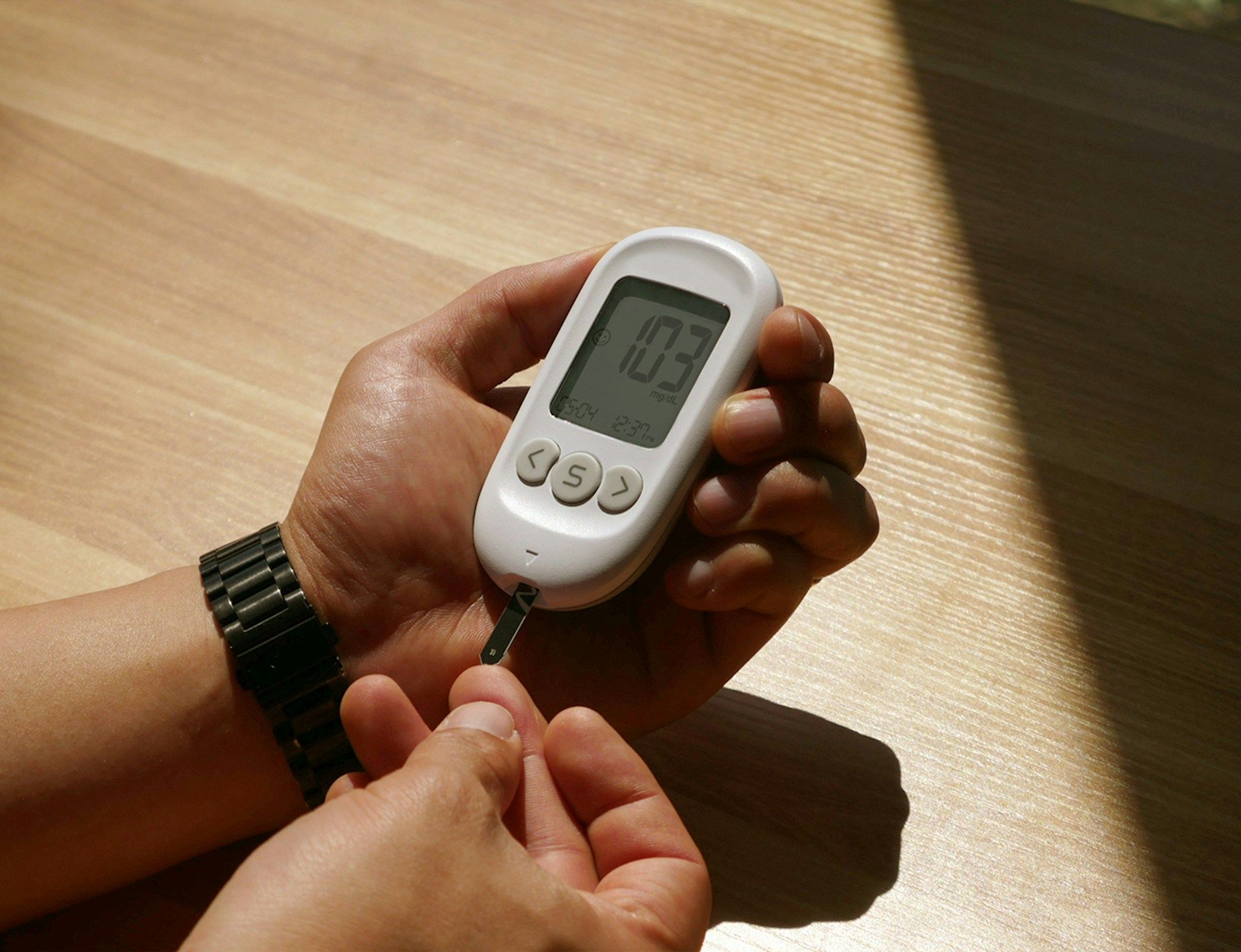Other Treatment Methods
- Adrenal hyperplasia
- Gestational diabetes
- Growth disorders in children
- Hashimoto's thyroiditis
- Hormone deficiency
- Hormone-producing tumors
- Hyperthyroidism
- Hypofunction of the adrenal cortex
- Hypothyroidism
- MODY (Maturity Onset Diabetes of the Young)
- Obesity
- Osteoporosis
- Overactivity of the adrenal cortex
- Sex hormones
- Type 1 diabetes
- Type 2 diabetes

© Unsplash
Type 2 diabetes
Diabetes mellitus type 2 is the most common form of diabetes worldwide. It is caused by a combination of insulin resistance - meaning the body's cells no longer respond adequately to the hormone insulin - and impaired insulin secretion in the pancreas. Insulin normally ensures that sugar is absorbed from the blood into the cells, where it serves as a source of energy. In type 2 diabetes, this only succeeds insufficiently, causing the blood sugar level to remain permanently elevated.
Main causes include a genetic predisposition, overweight – especially visceral fat tissue in the abdominal area –, lack of exercise and an unhealthy diet. Also StressLack of sleep and certain medications can also increase the risk. Type 2 diabetes usually develops insidiously over many years and often goes unnoticed for a long time. The symptoms are often non-specific or absent altogether. Possible signs include increased thirst, frequent urination, fatigue, blurred vision, poor wound healing, recurrent infections, or a general decrease in performance. The disease is often only discovered through routine examinations or in the context of diagnosing secondary diseases.
Diagnosis of type 2 diabetes
The diagnosis is usually made by determining the fasting blood glucose, the HbA1c value (long-term blood glucose), or by means of an oral glucose tolerance test (OGTT). The treatment aims to maintain blood sugar within a healthy range in the long-term and minimize the risk of secondary diseases.
Treatment of type 2 diabetes
The basis of any therapy is lifestyle changes such as weight reduction, healthy nutrition with a low proportion of simple sugars and saturated fats as well as regular physical activity. If these measures are not sufficient, blood sugar-lowering medication is used. Additionally, or in further stages, additional oral antidiabetics, GLP-1 analogues, or even insulin may be necessary.
The therapy is adjusted individually and is based on Age, accompanying diseases and the life situation of those affected. Close medical supervision, structured training, and regular monitoring are crucial to prevent late effects such as heart attack, stroke, kidney, or eye damage as well as the diabetic foot syndrome and to maintain the quality of life.








